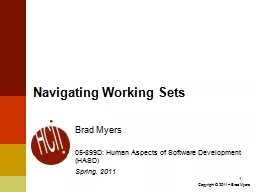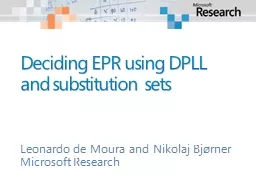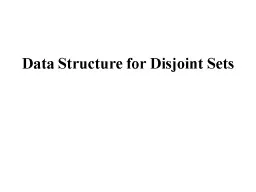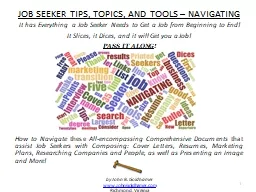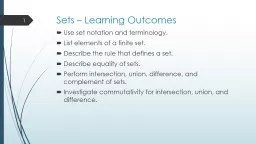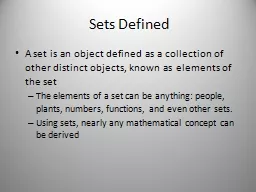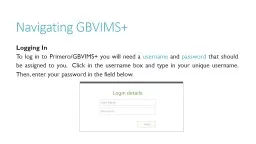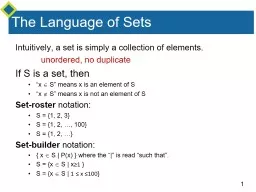PPT-Navigating Working Sets
Author : calandra-battersby | Published Date : 2017-05-21
Brad Myers 05899D Human Aspects of Software Development HASD Spring 2011 1 Copyright 2011 Brad Myers 10 expert Java programmers 5 tasks do in any order 1 program
Presentation Embed Code
Download Presentation
Download Presentation The PPT/PDF document "Navigating Working Sets" is the property of its rightful owner. Permission is granted to download and print the materials on this website for personal, non-commercial use only, and to display it on your personal computer provided you do not modify the materials and that you retain all copyright notices contained in the materials. By downloading content from our website, you accept the terms of this agreement.
Navigating Working Sets: Transcript
Download Rules Of Document
"Navigating Working Sets"The content belongs to its owner. You may download and print it for personal use, without modification, and keep all copyright notices. By downloading, you agree to these terms.
Related Documents

